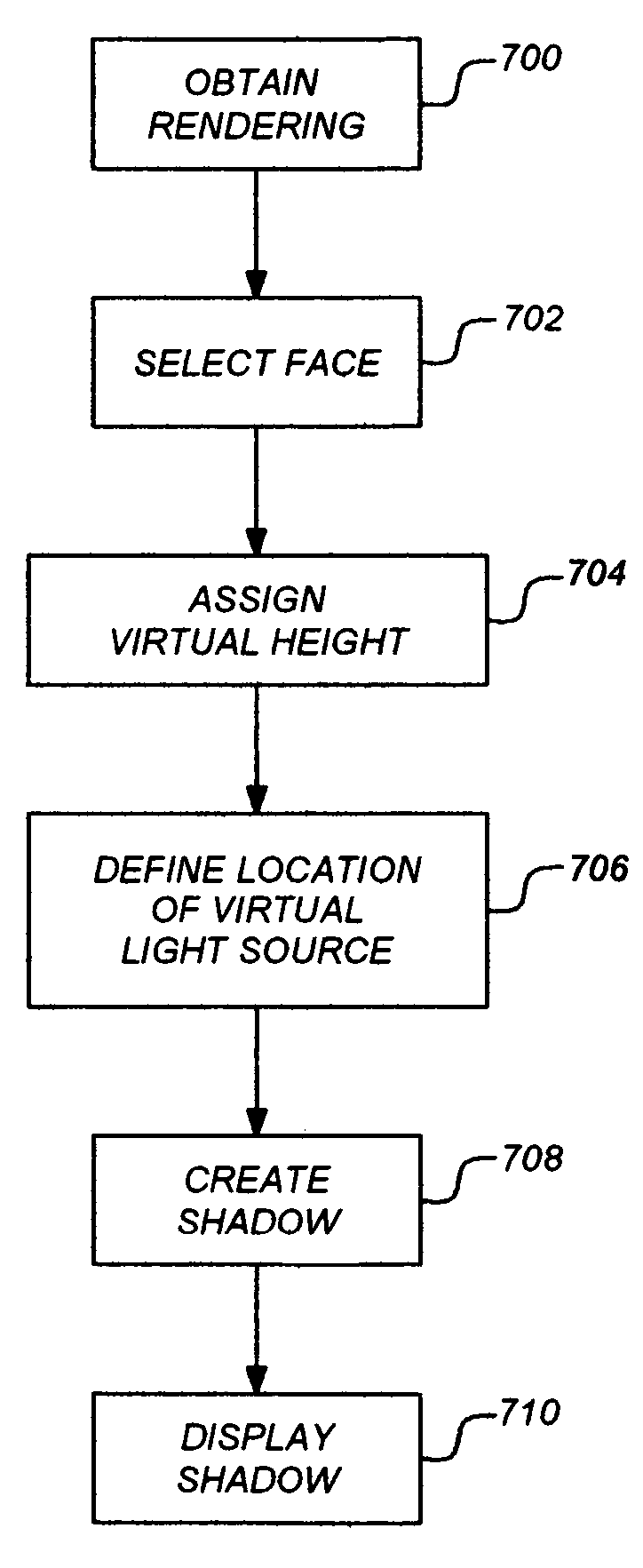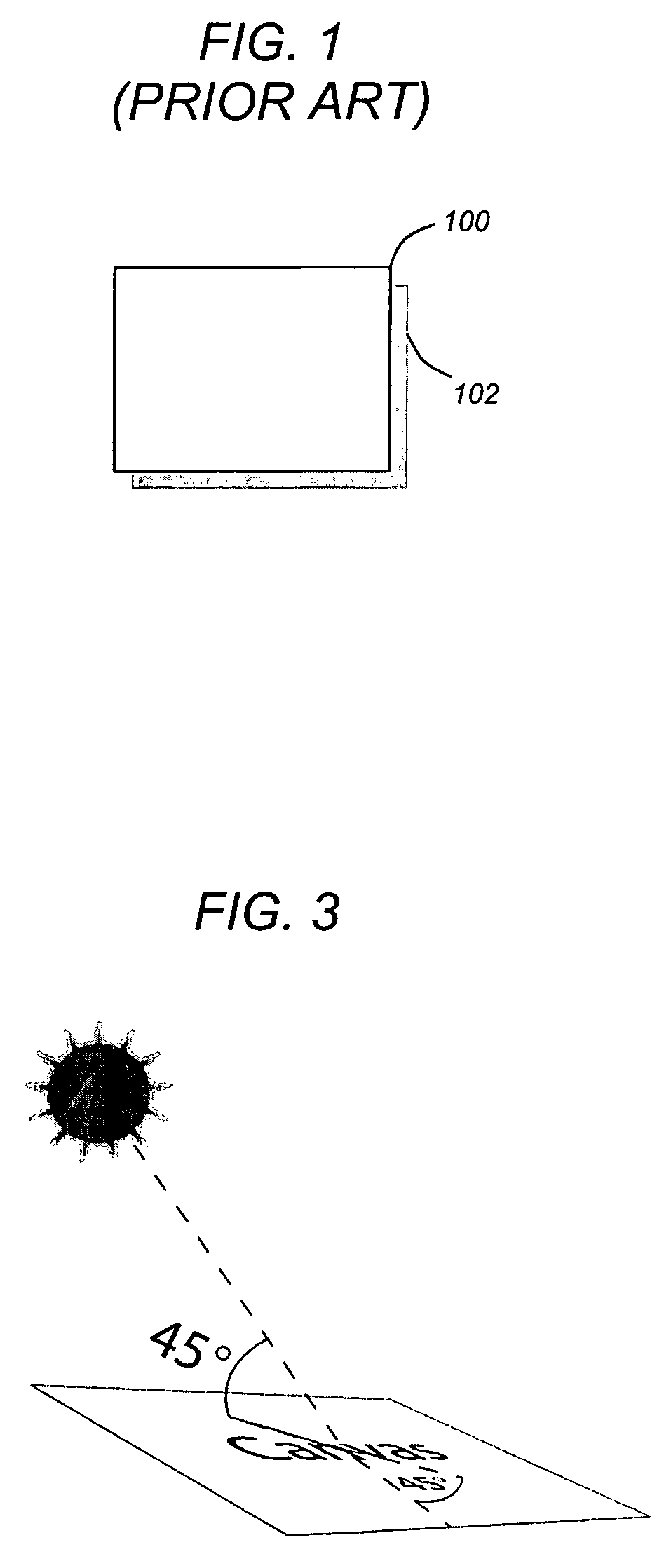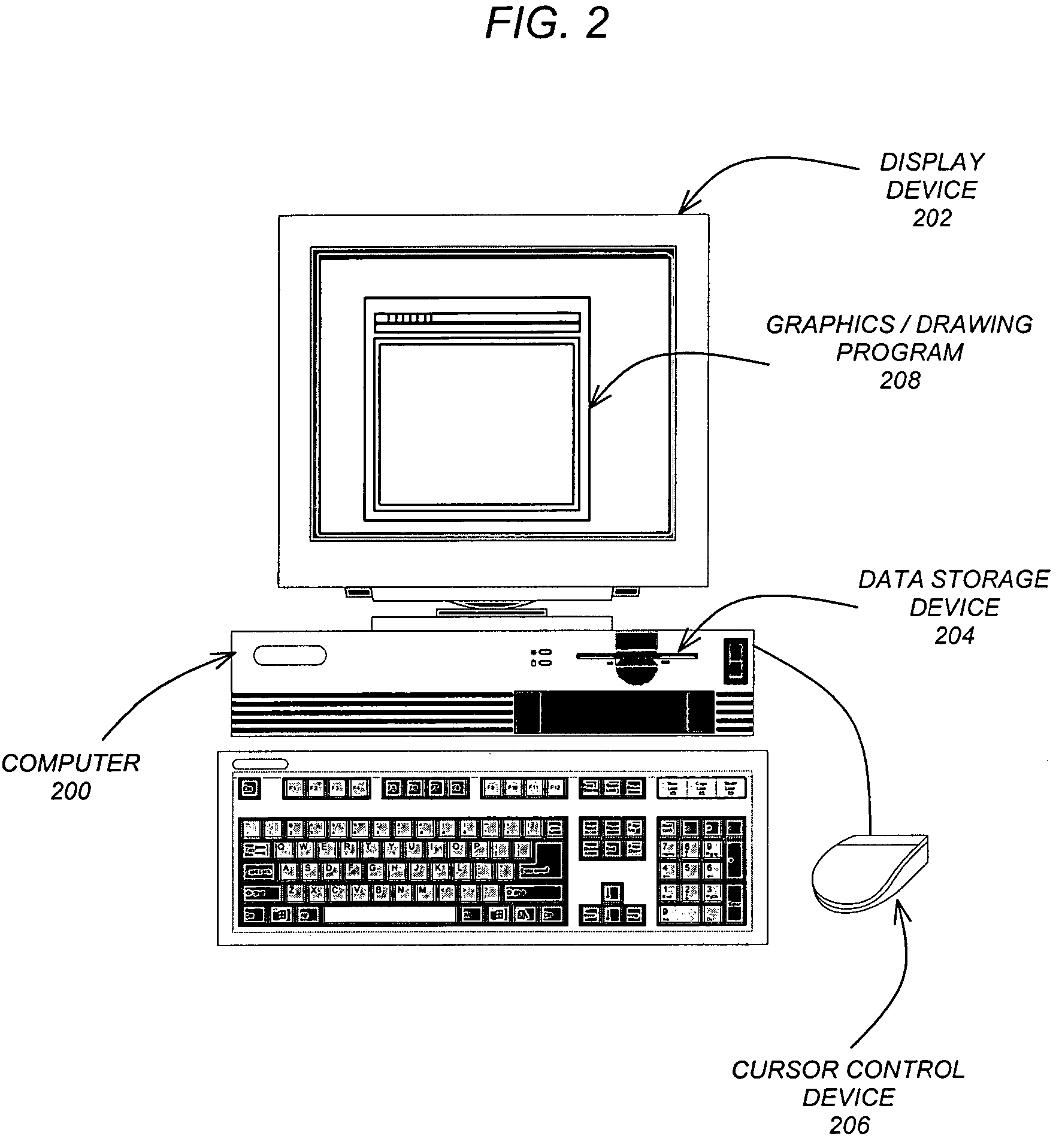Casting shadows
a shadow and shadow technology, applied in the field of architectural renderings, can solve the problems of complex cad drawings, difficult to use, confusing, etc., and achieve the effects of improving the quality of the finished produ
- Summary
- Abstract
- Description
- Claims
- Application Information
AI Technical Summary
Benefits of technology
Problems solved by technology
Method used
Image
Examples
Embodiment Construction
[0024]In the following description, reference is made to the accompanying drawings which form a part hereof, and which is shown, by way of illustration, several embodiments of the present invention. It is understood that other embodiments may be utilized and structural changes may be made without departing from the scope of the present invention.
Overview
[0025]Embodiments of the invention provide a method, apparatus, system, technique, etc. that casts shadows on a two-dimensional vector-based drawing in an easy intuitive interface.
Hardware and Software Environment
[0026]FIG. 2 is an exemplary hardware and software environment used to implement one or more embodiments of the invention. Embodiments of the invention are typically implemented using a computer 200, which generally includes, inter alia, a display device 202, data storage devices 204, cursor control devices 206, and other devices. Those skilled in the art will recognize that any combination of the above components, or any nu...
PUM
 Login to View More
Login to View More Abstract
Description
Claims
Application Information
 Login to View More
Login to View More - R&D
- Intellectual Property
- Life Sciences
- Materials
- Tech Scout
- Unparalleled Data Quality
- Higher Quality Content
- 60% Fewer Hallucinations
Browse by: Latest US Patents, China's latest patents, Technical Efficacy Thesaurus, Application Domain, Technology Topic, Popular Technical Reports.
© 2025 PatSnap. All rights reserved.Legal|Privacy policy|Modern Slavery Act Transparency Statement|Sitemap|About US| Contact US: help@patsnap.com



